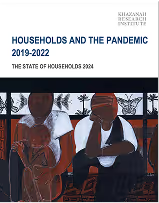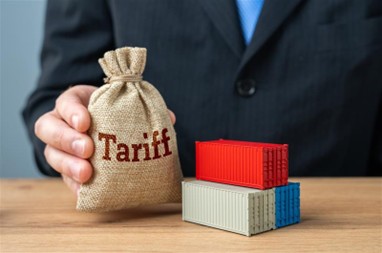
Introduction
Tariffs applicable to Malaysian exporters under the Agreement between the United States of America and Malaysia on Reciprocal Trade (ART) primarily cover the Reciprocal Tariff Rate introduced by the current Trump Administration (sometimes referred to as the Trump tariffs). The United States (US) commitment for Trump tariffs under the ART is divided into products where the US committed to 0% and 19% rates. This article peels back one layer of the tariff story by analysing the sectors that may benefit from the ART through the 0% Trump tariff rate.
In practice, the Trump tariff rate is applied in addition to the existing Most-Favoured Nation (MFN) Tariff Rates and tariffs introduced as a result of US domestic investigations on national security and unfair trade practices.
Thus, as multiple policy tools are used by the US to impose tariffs, the same product can face multiple tariffs ‘stacked’ on top of each other1. The phenomenon of ‘tariff stacking’ is discussed in a KRI publication titled “Stacked Against Malaysian Exporters: How Multiple US Tariffs Work and What the US Supreme Court Might Change”2.
To fully understand the advantages of the ART, a comprehensive analysis of both the costs and benefits, utilising both quantitative and qualitative methods, is necessary. This article examines one aspect, the zero percent Trump tariffs under the ART, aiming to identify which sectors may benefit from these exemptions. This article is intended for educational purposes only.
Examining Malaysia's Export Landscape Through the Zero Reciprocal Tariff Lens
Malaysia’s total exports to the US in 2024 are valued at RM198.9bn3. As shown in Figure 1 below, Malaysia’s exports are dominated by the electrical and electronics (E&E) sector. More than half of Malaysia’s exports in 2024 came from the electrical machinery and equipment product category. This is followed by (a) machinery and mechanical appliances, boilers, nuclear reactors; and (b) optical, photographic, cinematographic, measuring, checking, medical or surgical instruments and apparatus.
Figure 1: Malaysia's Exports to the US (2024)

In order to understand the potential impact of the ART on Malaysia, it is essential to examine the key features of the Trump tariffs. These are:
• The current Trump tariff for Malaysia is 19%, as established by an Executive Order on 31 July 20254. This rate was reduced from an initial 25%5.
• Certain goods are exempt from this tariff due to the US domestic investigations under Section 232. These exceptions include semiconductors, steel, pharmaceuticals, critical minerals, aluminium, automobiles and parts, certain consumer electronics, copper, lumber, and polysilicon6.
• The ART establishes a Trump tariff rate of 19% for most goods (excluding the exceptions mentioned above) and sets 0% rate for 1,711 tariff lines7.
As an example, in the E&E sector, semiconductors are currently exempt from the application of Trump tariffs, pending the US domestic Section 232 investigations. Although semiconductors are an important part of the E&E sector’s exports, the sector also exports other products. It is these other products that are currently applicable to the ART. Thus, semiconductors face two possible tariff outcomes under current US trade actions. If the ongoing Section 232 investigations on semiconductors result in new national-security tariffs, Malaysian semiconductor exports would likely fall under those measures. If Section 232 results in no new tariffs, Malaysian semiconductor exports may instead be covered by the ART’s 19% Trump tariff, making a negotiated exemption an important avenue for maintaining tariff-free access.
Structure and Meaning of Zero Tariff Lines
The ART between Malaysia and the US generally changes the Trump tariff landscape for Malaysian exporters from 25% to 19% Trump tariff rate (with some exemptions). Malaysian-origin goods that fall within the 1,711 exempted tariff lines enjoy 0% Trump tariff rates, while all other goods will be subject to the 19% additional tariff. Annex 1 outlines the product categories where the 0% rates can be found. It is important to note that a single product category can encompass hundreds, or even over a thousand, tariff lines. The rules of origin that will determine what qualifies as ‘Malaysian-origin’ have not yet been finalised.
The tariff lines that enjoy 0% Trump tariff rates are organised into three main sectors:
1. Aircraft (564 tariff lines)
This scope covers civil aircraft and a wide array of associated goods, including engines, parts, components, avionics, electronics and subassemblies. Within this scope, the distribution of HS chapters reflects the technologically intensive nature of aircraft-related production. HS chapters are the broad categories within the Harmonised System (HS) created by the World Customs Organization, grouping similar types of products and forming the basis for countries to classify goods for customs, tariff and trade reporting purposes before assigning them into more specific subheadings. The most significant clusters are found in:
• HS85, covering electrical machinery and electronic equipment (166 lines);
• HS84, encompassing machinery and mechanical appliances (148 lines);
• HS90, which includes optical, precision, and scientific instruments (84 lines); and
• HS73, consisting of iron and steel products such as fabricated components and structures (46 lines).
Analysing these tariff lines from a sector-specific perspective reveals the wide range of industrial inputs embedded in the Aircraft sector, reflecting the sector’s reliance on diverse yet interdependent product categories spanning electronics, precision instruments, mechanical systems and engineered materials. A sector-specific perspective is achieved by using a parallel categorisation based on product groupings, as outlined in the WTO's Multilateral Trade Negotiations (MTN) Categories 2023, which reinforces this technological profile8. Electrical machinery and electronic equipment account for 168 lines, mechanical, office and computing machinery for 146 lines, and other manufactured products for 113 lines. Additional represented categories include minerals and metals, transport equipment, wood, paper and furniture, rubber and leather and chemicals.
2. Pharmaceutical (807 lines)
The goods related to the Pharmaceutical sector consist of 807 exempted tariff lines covering products used in pharmaceutical applications that are not patented in the US. Scoping the type of goods that can enjoy 0% Trump tariffs to those that are not patented in the US may be a prohibitive condition of entry. The composition of this group of tariff lines is highly concentrated in chemical-related chapters, with the top three HS chapters accounting for most lines:
• CH29, organic chemicals (625 lines);
• CH28, inorganic chemicals (58 lines); and
• CH30, medicines and pharmaceutical preparations (52 lines).
Collectively, the Pharmaceutical sector represents a highly specialised concentration of upstream chemical inputs integral to pharmaceutical manufacturing. However, when the tariff lines are grouped by sector (using the MTN categories), the tariff lines for the Pharmaceutical sector are composed almost entirely of chemical products, with 803 of the 807 lines falling under chemical classifications, and only four lines linked to minerals and metals. This structure aligns closely with the MTN chemical and pharmaceutical lists encompassing Active Pharmaceutical Ingredients (APIs), intermediates and speciality chemicals.
3. Others (340 lines)
This scope comprises 40 exempted tariff lines not classified under the Aircraft or Pharmaceutical sectors. These items span agricultural goods, natural resources and industrial materials. Although widely dispersed across many HS chapters, the scope is anchored by five chapters with the highest number of lines:
• CH28, inorganic chemicals; compounds of precious metals, rare-earth metals and radioactive elements (56 lines);
• CH44, wood and articles of wood; wood charcoal (39 lines);
• CH81, other base metals; cermets9; articles thereof) (35 lines);
• CH45, cork and articles of cork (19 lines); and
• CH72, iron and steel (19 lines).
In general, this distribution of tariff lines resembles the raw materials and resource-based groupings, underscoring the extent to which this scope is anchored in primary commodities and basic industrial inputs rather than technologically intensive goods. The distribution of categories by sector further illustrates the diversity of sectors represented within this scope. The largest concentrations fall within minerals and metals (122 lines), followed by wood, paper and furniture (72 lines) and chemicals (61 lines). Additional representation appears in coffee, tea, cocoa and spices (26 lines), other agricultural products (17 lines), fruits and vegetables (12 lines), oilseeds, fats and oils (8 lines), and textiles (8 lines). Beyond these, smaller categories including rubber, leather and footwear, live animals and meat, cereals and food preparations, beverages and tobacco and other manufactures collectively account for the remaining lines.
Malaysia's Export Sectors that Could Benefit from Zero Percent Tariff
Malaysia’s ability to benefit from the zero percent tariffs of the ART depends on how closely its export structure aligns with these exempted tariff lines. Three segments of Malaysia’s export sectors stand to benefit, though the depth of advantage differs across sectors. These are the aerospace, E&E and chemical and oleochemical sectors.
Aerospace. This sector may be the greatest beneficiary of the zero percent Trump tariffs, maintaining Malaysia’s participation in the US-based aerospace value chain. Specifically, Aircraft covers civil aircraft systems, engines, avionics, electrical equipment and precision-engineered components, consistent with Malaysia’s strengths in machining, advanced assembly and MRO-related component production. Without exemption, these goods would otherwise face the combined MFN tariff and the additional 19% Trump tariff. Their continued 0% Trump tariff preserves Malaysia’s competitiveness in supplying aircraft and aerospace electronics to the US, even as most other Malaysian exports experience a substantial rise in tariff exposure.
E&E. While many E&E exports fall outside the exempted list for zero Trump tariffs, this segment embedded in aerospace systems could benefit. Electrical machinery, electronics and instrumentation used in aircraft are explicitly included within the scope of Aircraft-related goods. Their exemption allows Malaysian avionics-related electronics and specialised assemblies to maintain tariff-free entry into the US, supporting high-value E&E activities integrated into aerospace production.
Chemical and oleochemical. The chemical and oleochemical sector benefits through the Pharmaceutical sector, though the exemption is narrowly defined. Exports at 0% Trump tariffs are limited to non-patented exports. Nevertheless, these upstream chemical inputs would otherwise face a tariff jump once the 19% tariff is applied. Their exemption therefore ensures 0% Trump tariff access for non-patented pharmaceutical intermediates and oleochemical derivatives, enabling Malaysian exporters some possible access to US pharmaceutical and speciality-chemical supply chains.
A limited benefit is extended to selected resource-based industries, as reflected in the small number of other exempted lines. Within this group, the largest concentrations arise in minerals and metals, followed by wood, paper and furniture, with additional representation in chemicals and agricultural categories. Although these products generally faced modest tariff levels before the ART, exemption from the additional 19% tariff prevents a substantial increase in their overall tariff burden. These sectors, therefore, retain 0% Trump tariffs for specialised and niche export segments that would otherwise experience a pronounced rise in cost.
Malaysia’s Trade Relationship with the US at the Product-level
Malaysia’s trade relationship with the US on specific product categories is illustrated through Table 1 below. These are the product categories with the largest number of tariff lines with 0% Trump tariffs. As the data presented in Table 1 is aggregated data, it represents an overestimation of the trade value of the tariff lines with 0% Trump tariffs. A more detailed analysis of these tariff lines is needed to offer a clearer understanding of their value by examining each tariff line individually. The Malaysian External Trade Development Corporation (MATRADE) has estimated that these 1,711 tariff lines are valued at USD5.2bn (approximately RM23.8bn), or roughly 12% of Malaysia’s total exports to the US in 2024.
Table 1: Malaysia's Trade Relationship with the US: Product-level Export and Import Analysis in 202410

Note: Information is aggregated to the HS 2-digit code.
Table 1 above is divided into two parts. Part A examines the significance of the US as a key export market for Malaysia’s goods. Part B examines the significance of Malaysia as a key importing country for the US. These two perspectives provide insight into the importance of the US to Malaysia and vice versa, particularly for selected product categories.
To illustrate the potential benefits of zero tariffs in specific product categories, we examine organic chemicals, which consist of 625 tariff lines with zero tariffs. In 2024, Malaysia exported organic chemicals to the US valued at RM1.08 billion, representing about 0.54% of Malaysia's total exports to the US11. However, Malaysia’s exports of organic chemicals to the US accounted for only 4.4% of Malaysia’s total organic chemical exports in 2024. The US is only Malaysia’s seventh most important export market for organic chemicals, as countries such as China, Indonesia and India are more important export markets.
Similarly, Malaysia is not a key importer of organic chemicals for the US. Malaysia ranks 21st as an importing country for organic chemicals, accounting for only 0.4% of the US’ total imports of organic chemicals. Other countries, such as Ireland, China, and Switzerland, were more important importing countries for organic chemicals in the US in 2024.
In general, the size of the US market is evident, given that the US is a key export market for Malaysia in three out of five product categories listed in Table 1. For example, the US is Malaysia’s key export market for the HS 90 product category, which covers optical, photographic, cinematographic, measuring, checking, precision, medical, or surgical instruments and apparatus. The US represents more than a quarter of Malaysia’s exports in this product category. However, in the case of the US, Malaysia’s imports for this product category represent only 3.4% of the US’ total imports in this product category.
In conclusion, the analysis of Malaysia's trade relationship with the US highlights the complexities of their economic interactions. Despite receiving the highest number of tariff lines with 0% Trump tariffs, organic chemicals do not represent a large portion of Malaysia’s trade with the US, nor is the US the most important export market for Malaysia’s organic chemicals. However, the size of the US market is clear, given the relatively low share of Malaysia’s imports for each product category.
Conclusion
The breakdown of product categories with 0% Trump tariffs reveals the export sectors that could potentially benefit from the ART. Three segments of Malaysia’s export sectors stand to benefit, though the depth of advantage differs across sectors. These are the aerospace, E&E and chemical and oleochemical sectors. Specifically, Malaysia’s participation in the US-based aircraft value chain is likely to continue, benefiting from the 0% Trump tariffs for this sector.
Comparing the product categories against the value of Malaysia’s exports to the US provides context for the sectors that may benefit from the ART. This approach to understanding the ART aims to contribute to the conversation on which export sectors benefit from the ART, thereby enriching discussions on the costs and benefits of the ART.
Annex 1
Annex 1: Number of Tariff lines with Zero Percent Reciprocal Tariff Rate (Trump Tariff Rate)

















